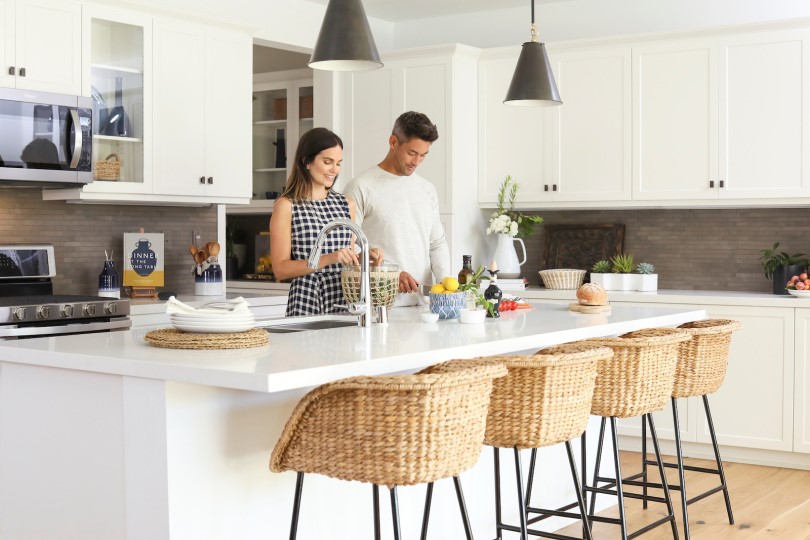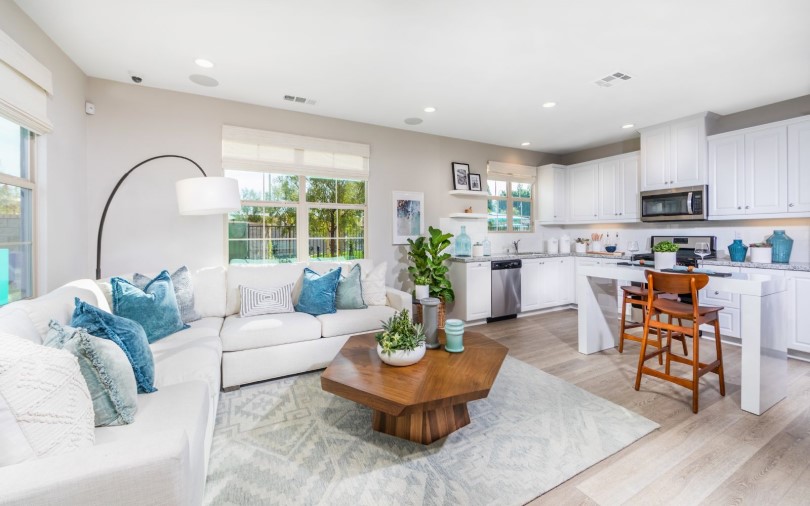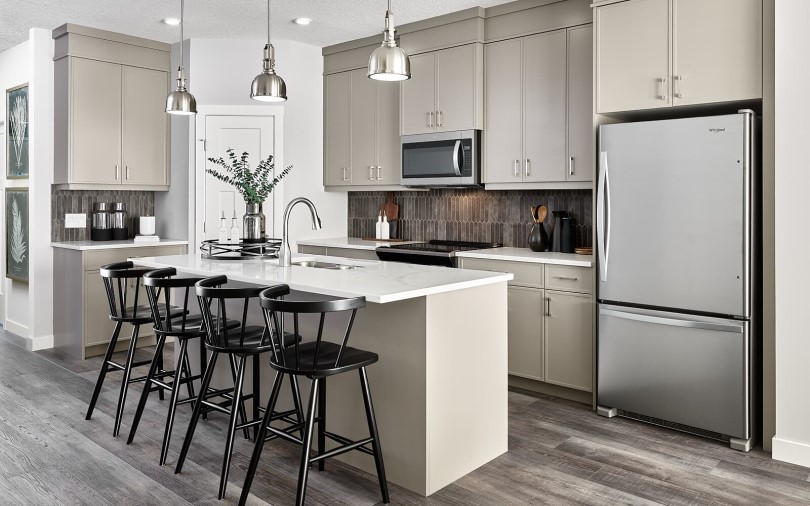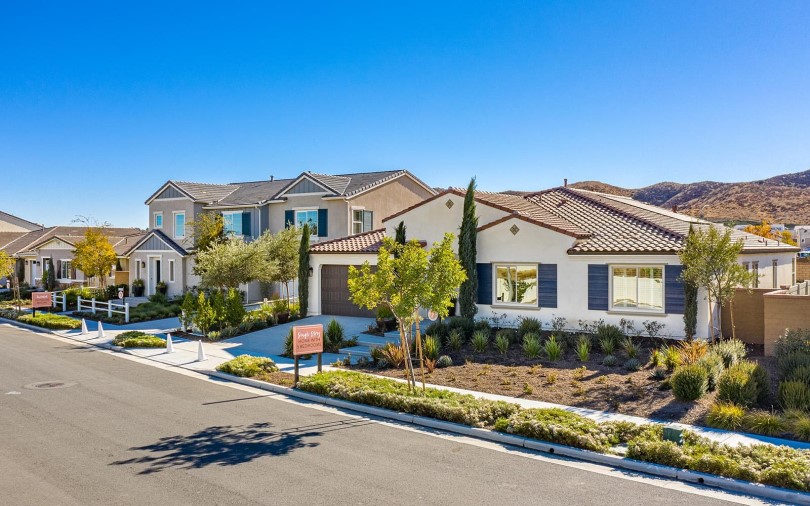Limited time savings on select homes. Explore Promotions now!
How to Save for Your First Home

Homeowner. While it may not be something you can call yourself right now, it’s a title you want to claim in the future. You’ve finished school, started a career, and are checking off major life milestones right and left. Next on the horizon? Buying a house. While it may not be in the immediate future, there are steps you can take to save for your first home. It’s one of the largest purchases you’re going to make, so you need to make sure you’re prepared.
Start saving – Now
Saving the amount of money you’ll need to buy a house takes time (it’s a marathon, not a sprint), so it’s never too early to start. Even if homeownership is a ways down the road, if it’s something you know you want, don’t wait to start saving.

When you think about the cost of buying a home, one of the most daunting amounts you’ll see is the down payment. It’s important to think beyond that though. You’ll want to build a solid foundation for your finances and save a minimum of an additional three to six months’ worth of expenses as an emergency fund. You don’t want to be “house-poor” right off the bat. Should an issue arise (not just with the house, but car repairs, medical emergencies, or job loss), you want to be prepared.
Cut costs where you can and create a budget
The biggest obstacle to saving money is changing your habits. It’s hard to make sacrifices so share your goals with friends and family to help keep you accountable. Put visible reminders of your goal wherever you’re tempted to spend money – put a picture of your dream home on your computer or desk so next time you’re tempted to click “add to cart,” you may rethink that purchase.

Create a budget
It sounds easy right? Maybe not. You have to start somewhere so start by learning what your finances look like as of today. Get together all of your bank and credit card statements to figure out where your money is going. You may be surprised to see how much you’re spending and where once you sit down and look. Using a budgeting tool like Mint can help automate the process by pulling your information directly from your bank and categorizing your spending into a pie graph. You can easily see the breakdown of your monthly income, fixed expenses (rent, car payment, insurance), discretionary expenses (dinners out, shopping, entertainment), and look for areas where you can cut back. What you give up buying today means you can buy more of what you want later.

Stretch your budget even further
You can move to a smaller apartment or a more affordable area. Buy generic brands at the grocery store. Reduce or cut out bad habits like impulse buying and getting takeout. If it’s time for your annual performance review, it may be the moment to ask for a raise. Pick up a side hustle – use your photography skills to freelance, make some furry friends by pet-sitting, and instead of being the one ordering food, you can be the one delivering it. You can even sell some of your stuff. That air-fryer that you “had to have” but never gets used anymore? You can make a few bucks selling it – you won’t even miss it.

Create a timeline
Ideally, when do you want to purchase a home – two years, five years, more? Look at what homes are selling for in the area you’d like to buy to help estimate your purchase price and calculate the 20% you’ll need for a down payment. Divide that amount by the number of months between today and the date you want to be able to buy. This will tell you how much you need to save each month. Figure out if your timeline makes sense and what adjustments you need to make to meet that savings goal. Naturally, the shorter your timeframe is, the higher your monthly savings goal will be.

Automate your savings
Once you have your amount calculated, automate your savings. Allocate that amount to go directly into a savings account so you’re not tempted to spend it. When it comes to saving, the adage of “out of sight, out of mind” definitely rings true. If you don’t see the money in your spending account to begin with, you won’t have the temptation to use it.
Add to your account whenever possible
Grandma sent you a check for your birthday? Add it to your savings. Your company gave you an annual bonus? Add it to your savings. That nice tax refund you’re getting? Add it to your savings. Any time you can contribute extra money to your goal, you fast-forward the process of saving and can potentially chop a month or more off your homebuying timeframe.

Educate yourself
When it comes to buying a home, one of the most important things you can do is arm yourself with knowledge. Know all the terms and numbers and understand what they mean and how they work.
Know your credit score
Your credit score has a huge impact on your future purchasing power. If you don’t have the greatest score now, you have time to improve it so lenders are willing to give you that mortgage loan. Take an in-depth look at your credit situation. Many people have errors on their credit report that could be costly – a higher interest rate on your credit cards or home mortgage or even your car insurance. If you want to buy a home, get fiscally fit. Pay down any outstanding balances and pay your bills on time.
Know how the down payment affects your monthly mortgage
You may have heard loan options where you only need to put down as little as 3.5%. As enticing as this may sound, it’s typically better to plan and save for 20% down. The goal is to avoid being “house poor” – essentially buying far too much house for your budget and all your money going to your monthly mortgage payment. If you put down less than 20%, you’ll have to purchase private mortgage insurance (PMI) which is a risk-management product that protects the lender against loss should the borrower default on their loan. While a lower down payment percentage may mean less money out of pocket upfront, it could cost you more in the long term with extra interest and fees.

Know what you qualify for
Work with a mortgage lender to help you. You can discuss your current financial situation and figure out what you would qualify for at this moment and what you’ll need to do to qualify for your dream home in the future. One of the first things lenders look for when they consider you as a mortgage candidate is your debt-to-income ratio (DTI). The more debt you have, the less favorable you are as a candidate. While it may sound counterintuitive to pay down debt in order to save, once those debts are paid off you’ll have hundreds (if not thousands) of dollars freed up to help you save faster. A mortgage lender can help you understand your DTI as of today and what ratio you need to have in the future.
Know all the homebuying costs
Brace yourself: The down payment isn’t the only expense you’re going to need to save for before buying a home. Fortunately, the other costs aren’t as hefty and shouldn’t take much longer to save for. You’ll need to factor in closing costs – expenses like loan origination fees, credit reports, underwriting fees, the appraisal, and escrow and title fees to name a few. You’ll also have to pay property taxes and homeowner’s insurance and if your new home is in an HOA, you’ll be responsible for upfront dues and document fees. It can add up quickly, so it’s important to prepare.

Buying a home can be a long process, but you’re going to learn a lot and will go into homeownership well-prepared. Ideally, you’ll have mastered the art of budgeting, have a solid understanding of your financial situation, and will be ready to take on the joys and challenges homeownership may bring. When you’re ready to make homeownership a reality, let us help you find your new home. We’ll be expecting you!
